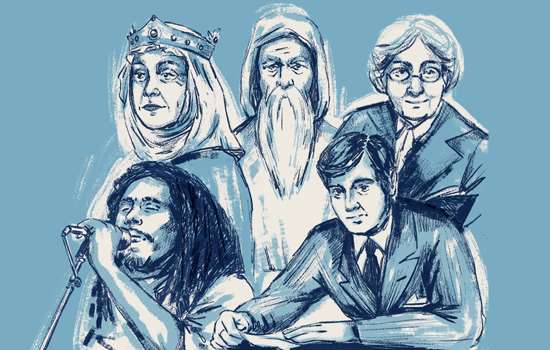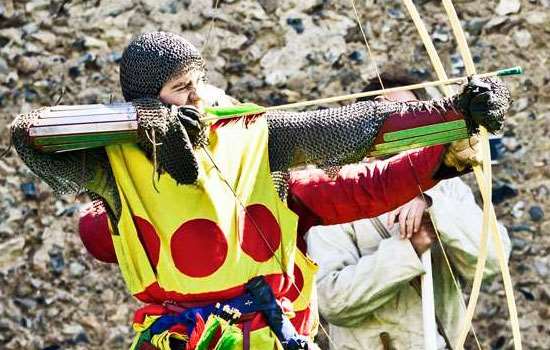EARLY BEGINNINGS
The history of butter stretches back to prehistory when people had to be creative in terms of their ingredients, working around the local climate. ‘The process of developing butter has been around since the Neolithic period,’ explains food historian Dr Annie Gray, ‘It’s almost as old as cooking itself. It’s particularly something that you find in colder northern climates. So places that are Mediterranean and further south tended to be oil-based cultures – olive oils and other such things. In the north you tended to find animal fats used – but also butter’.
These dietary differences even created cultural divisions between north and south. The ancient Greeks referred to those in the north of Europe as lowly ‘butter eaters’, while Japanese Buddhists rebuked them as ‘butter stinkers’ for their dependence on dairy.
TECHNOLOGICAL ADVANCES
So, how did butter production evolve here in Britain? ‘At first it was very, very seasonal,’ Gray explains. ‘It was made from March through to about September. But changes in bovine husbandry and improved cattle breeds in the 18th century meant cows could be milked all year round, while advances in dairy technology allowed better quality butter to be made,
‘In the 19th century, improvements in transport and new ways of keeping butter, including refrigeration, started to come in. At the same time, churn technology improved,’ adds Gray.
These advances can been seen across a number of English Heritage sites, where dairies were built to allow butter production for the families who lived there.
“Any site of prestige, anywhere with a family of standing, would have had a dairy”
DIDO BELLE AT KENWOOD
The original dairy at 18th-century Kenwood on Hampstead Heath, which was eventually replaced, was the workplace of one particularly famous resident. It was here that Dido Elizabeth Belle, the daughter of a young enslaved African women and John Lindsay, an officer in the Royal Navy was raised in Georgian society by the 1st Earl of Mansfield. She superintended the dairy and poultry yard (watch the video to find out more).
This may seem unusual given Belle’s status as a gentlewoman.However, Gray says this was actually ‘pretty common for aristocratic ladies at this time’ and ‘enabled her to get together with friends’. She explains that hobby dairies, or ornamental dairies, of the sort seen at Kenwood, ‘were working spaces’. At the same time, the maids who occupied them were ‘very prestigious’, enjoying ‘a much nicer life than most of the other servants.’
WORK AND PLAY AT WREST PARK AND OSBORNE
The dairy at 19th-century Wrest Park is a fine example of an ornamental architecture, built in the 1830s by Thomas, Earl de Grey. Now used as a sculpture gallery, the dairy has been through many iterations throughout the centuries.
Osborne, once the Isle of Wight residence of Queen Victoria and Prince Albert, didn’t have a dairy in the main house but it is thought there was probably one in the Swiss Cottage building, adjacent to the scullery.This Alpine-style chalet, built in the grounds, was where the royal children were encouraged to play at being adults and learn new skills, including how to churn butter.
DAIRY MAID FANNY COWLEY AT AUDLEY END
Fanny Cowley was the dairy maid at Audley End house in 1881, and later produced butter in the kitchens. Cowley was a baker’s daughter and had worked at various farms in Gloucestershire during the late 19th century before arriving at Audley End (watch our video to find out how she prepared and presented butter).
The 5th Lord of Braybrooke was one of the first people in the country to own a pedigree herd of Alderney cattle (the pure form of which is now extinct), which were kept at the home farm to provide milk for the dairy. This was prized for its high fat content. In 1882, farm manager William Hosley won an award for his dairy records, which demonstrated a uniquely scientific understanding of milk yields.
DAIRY FARMS AT BOSCOBEL AND BRODSWORTH
Boscobel House is famous for The Royal Oak, the site where Charles II hid after the Battle of Worcester in 1651, which marked the end of the English Civil War. However, in the 19th century, Boscobel became established as a dairy farm, against a backdrop of agricultural depression. Recognising the economic dilemma that faced the arable estate when UK grain prices plummeted, landowners the Evans family swiftly converted it to dairy production, raising a herd of cows to supply milk, butter and cheese.
At Brodsworth Hall, the Victorian country estate of the Thellusson family in South Yorkshire, there was a home farm, which was later turned into a model dairy farm. This became so significant, King George V and Queen Mary were inspired to pay a visit in in 1912, leading it to being dubbed the ‘cow palace’.
A HUMAN HISTORY
‘Any site of prestige, anywhere with a family of standing, would have had a dairy,’ says Gray. ‘If you visit all of the English Heritage sites with dairies, you’ll see everything from the ornamental, which were visited by the ladies of the house, through to fully commercial operations.
‘While a lot of these dairies were designed by aristocrats, who also worked in them, you’ve always got a dairy maid present,’ she explains. ‘We shouldn’t forget about the maids who worked in them, or the men who milked the cows. These dairies are spaces that don’t just have an aristocratic history, but also cut through society vertically.’
Country Life Butter is the proud supporter of English Heritage’s Members’ Week. Country Life celebrates its British roots and countryside heritage, and is delighted to support institutions such as English Heritage, which play a key role in conserving some of England’s finest historic sites and in bringing history to life for people of all ages.
FIND OUT MORE ABOUT MEMBERS’ WEEK


